Translation principles
During my Modul project, I found it very helpful to establish a set of descriptive words for what I was attempting to visually translate. I therefore wanted to do the same thing for Norway, as a way of narrowing down my project.
What I was most interested in translating was 1; Norwegian nature, and 2; Norwegian values.
By focusing on nature I could attempt to communicate that Norwegian land is not limited to belong to Norwegians – following my speculative approach where Norway does not have borders. By developing a language for all about the nature, I could begin to refer to Norwegian nature as globally accessible.

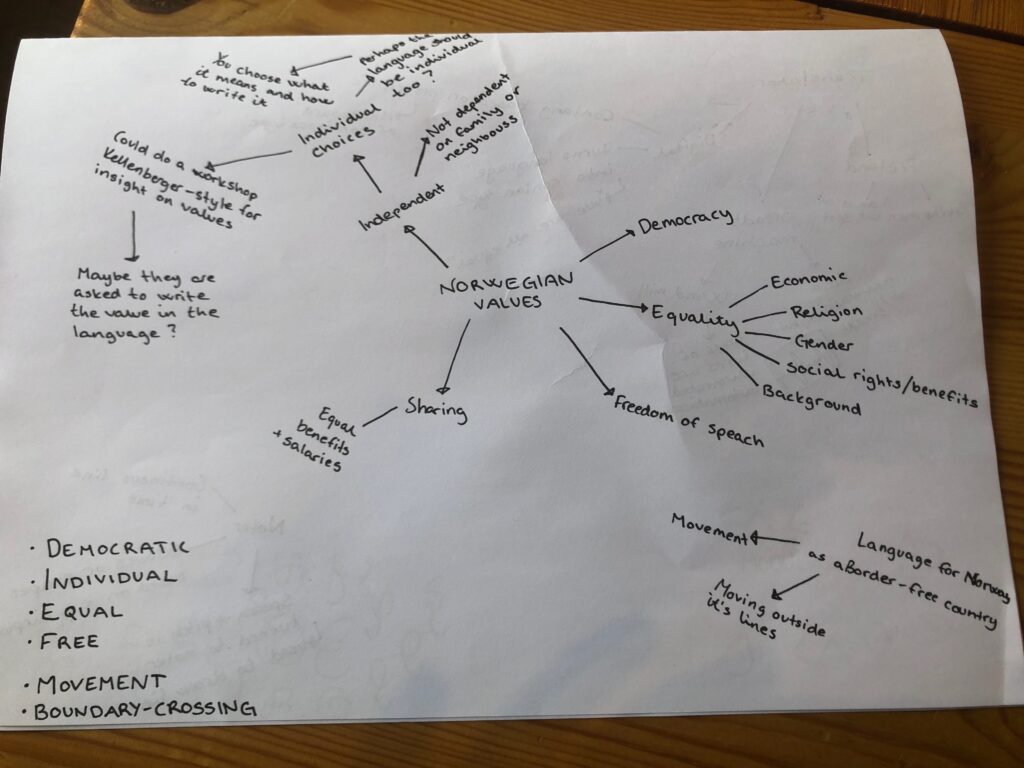
Since I’m focusing on applying Norwegian values to all, including non-Norwegians, I wanted to establish a set of principles, inspired by what I believe most Norwegians would list as typical Norwegian values (if using these I could do a proper research method to gain proper insight). Since my project is rather speculative, I also added movement (border crossing) as a value, as this would be true for the speculative Norway I’m imagining.
Ideation
Mindmap:
Having decided on 5 descriptive words that I thought would be most relevant for visual explorations (Dynamic, Shifting, Fresh, Light, Pointy), I went on to do an ideation mindmap based on the words:
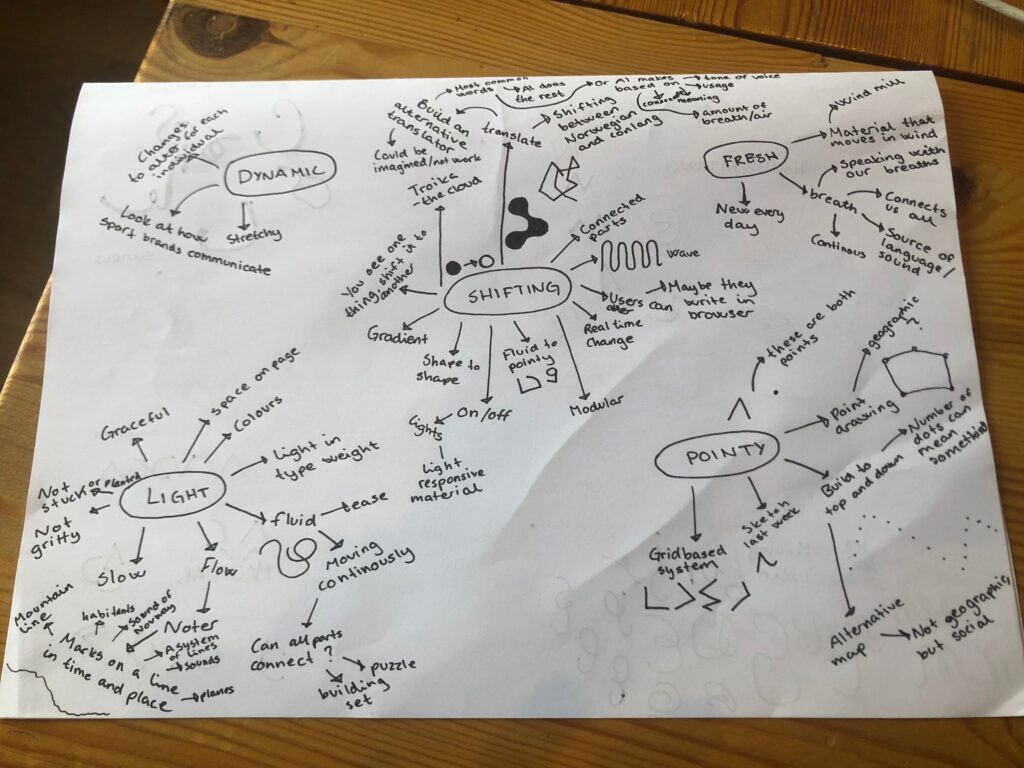
Moodboards:
Further, I began to collect visual references for each of the words:
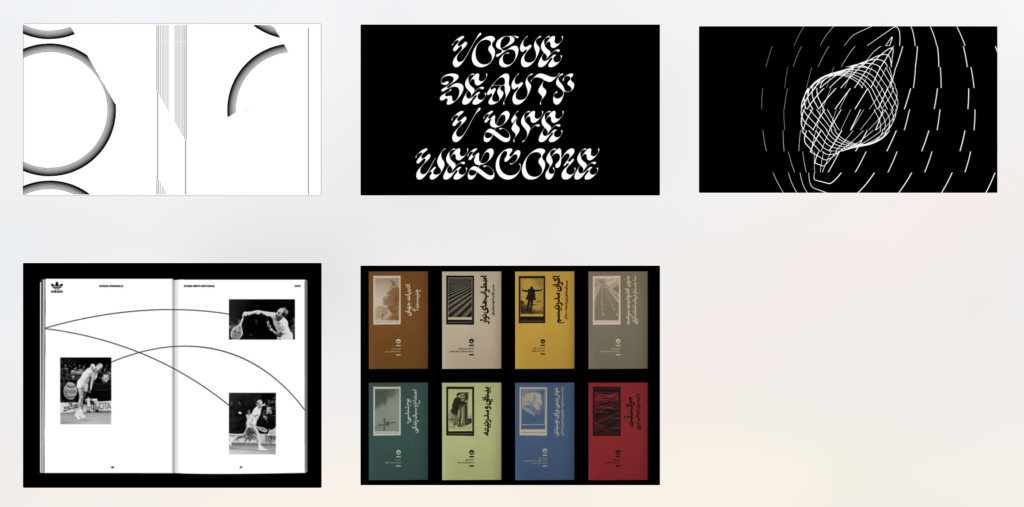
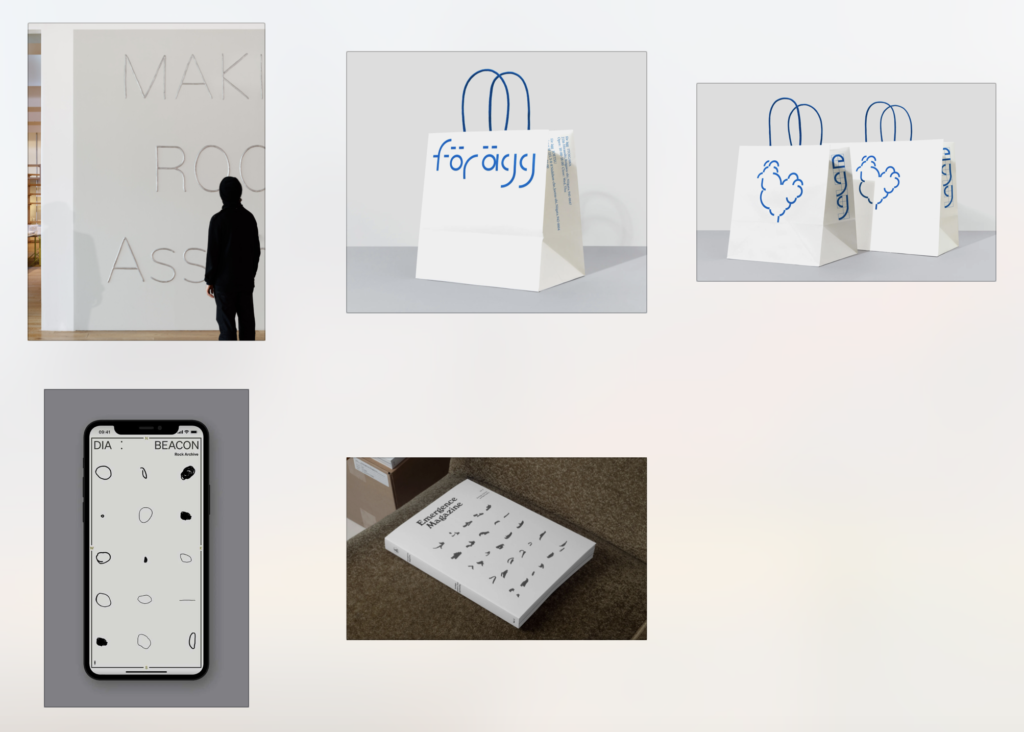
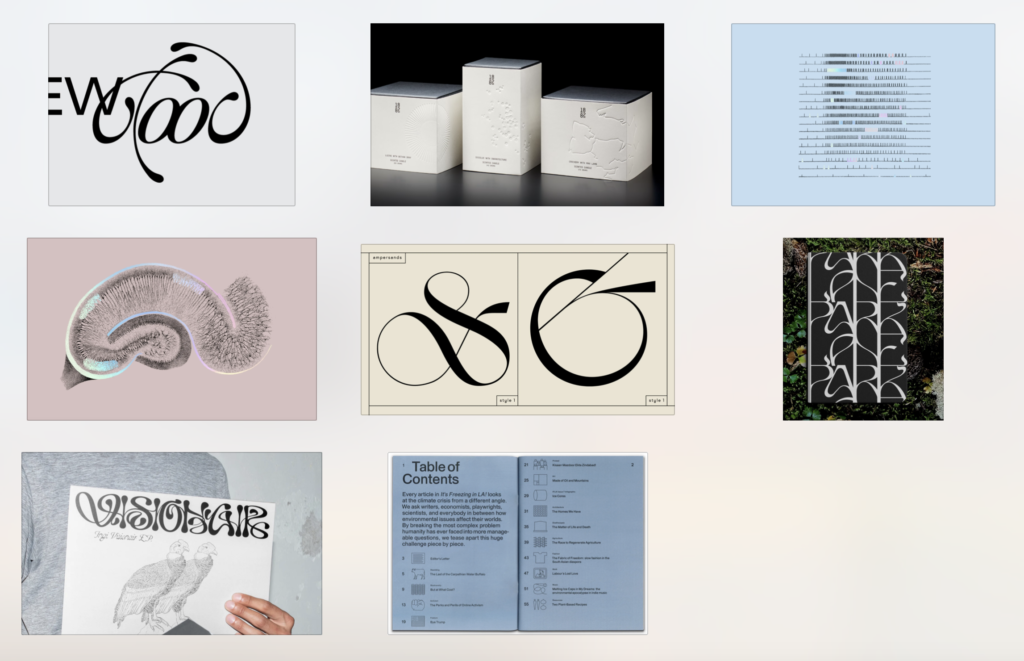
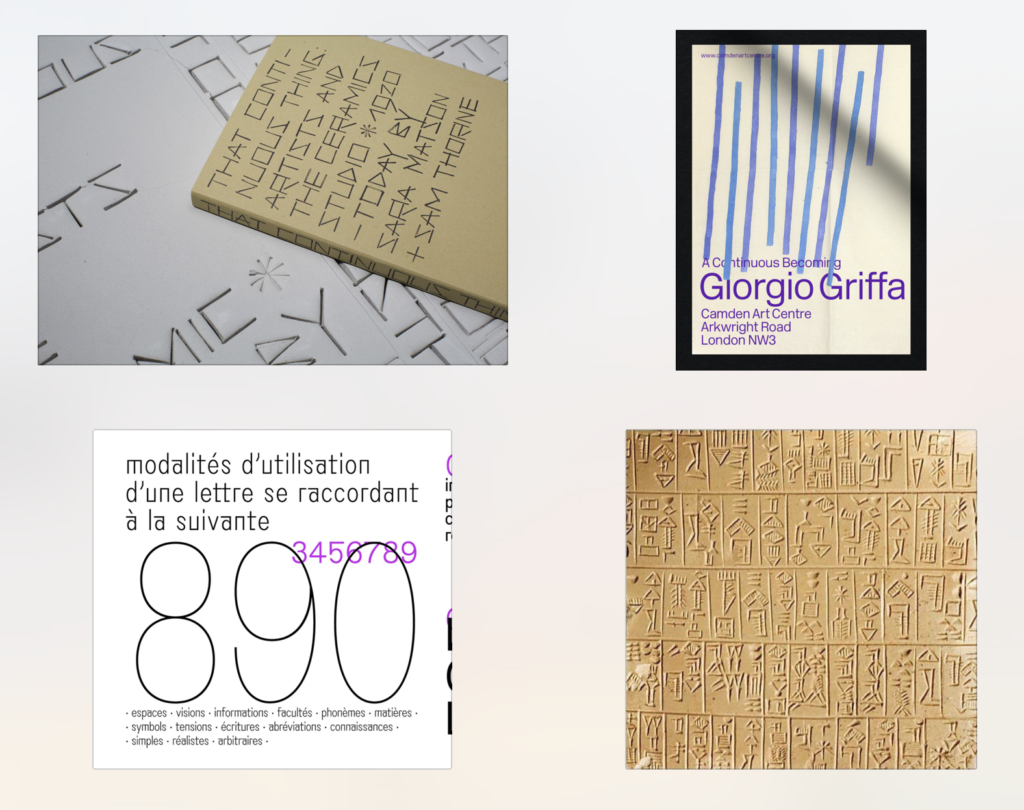
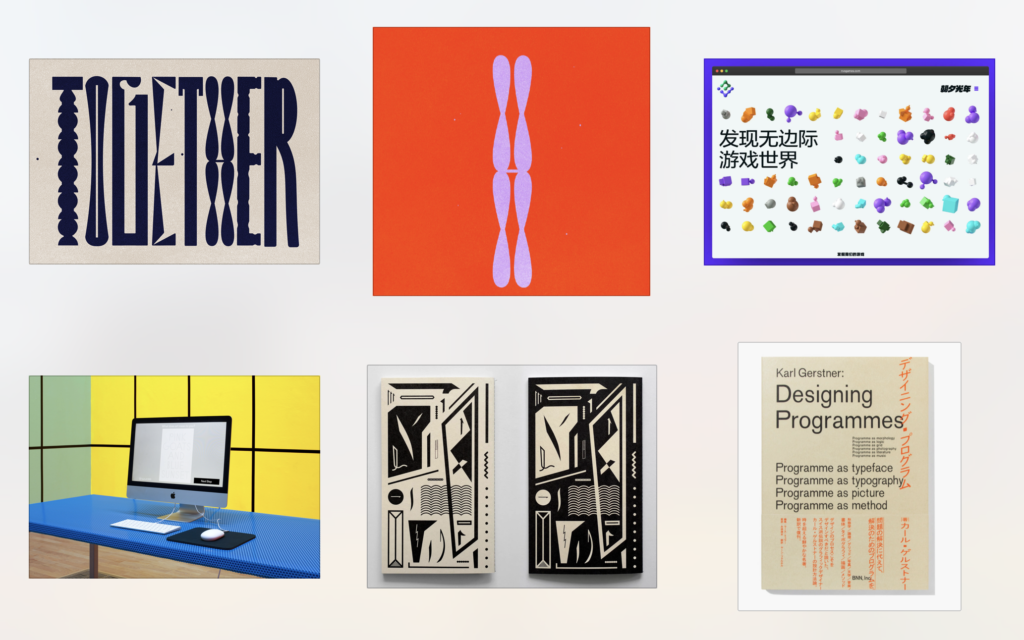
2: Fresh
3: Light
4: Pointy
5: Shifting
Fig. 1-5: Reigstad 2022. Week 7 moodboards
Sketches:
After making the moodboards I went on to do sketches in attempt to establish specific ideas:
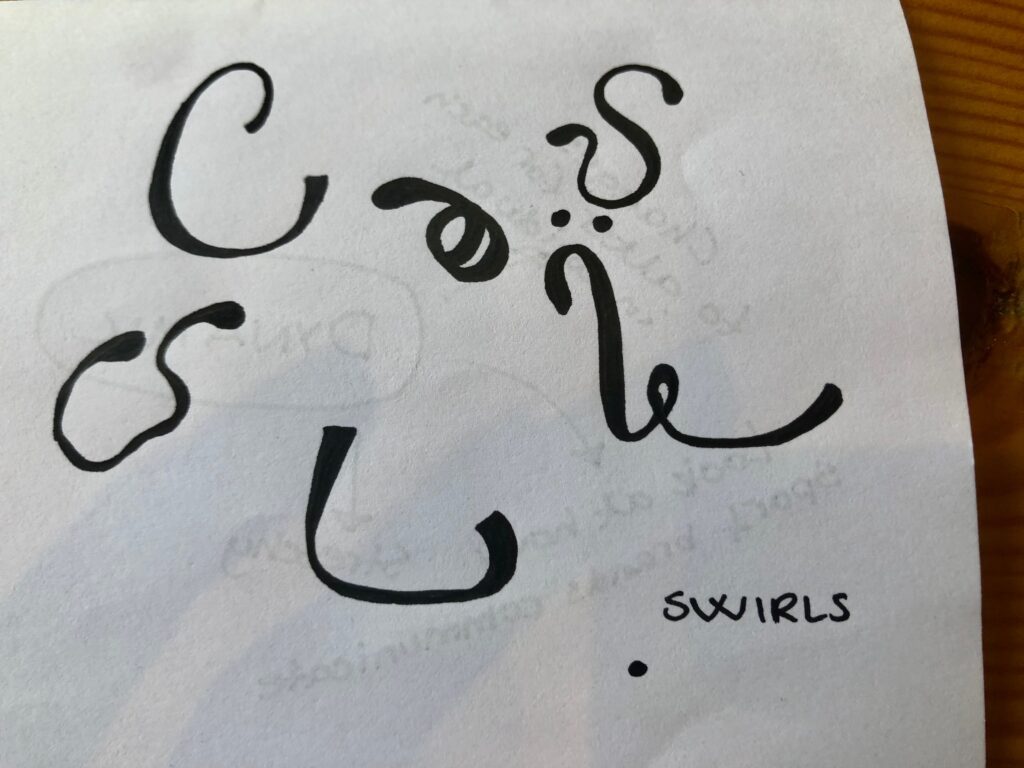
Conlang swirls
The word light was mainly inspired by the Norwegian snow, but it also made me reflect on movement, which tied in nicely with a non-border society. Last week I observed how latin letterforms are quite stiff, as opposed to writing systems such as Arabic and Sanskrit. These insights inspired me to experiment with a constructed writing system consisting of elegant swirls. The letterforms could either be edited versions of Latin, or completely made up shapes.
This idea could potentially be used to develop an international writing system – a typographic addition to conlangs such as Esperanto.
Another solution could be to make the typeface variable – letting users shift between legible and non-legible letters, maintaining the swirly and moving characteristics.
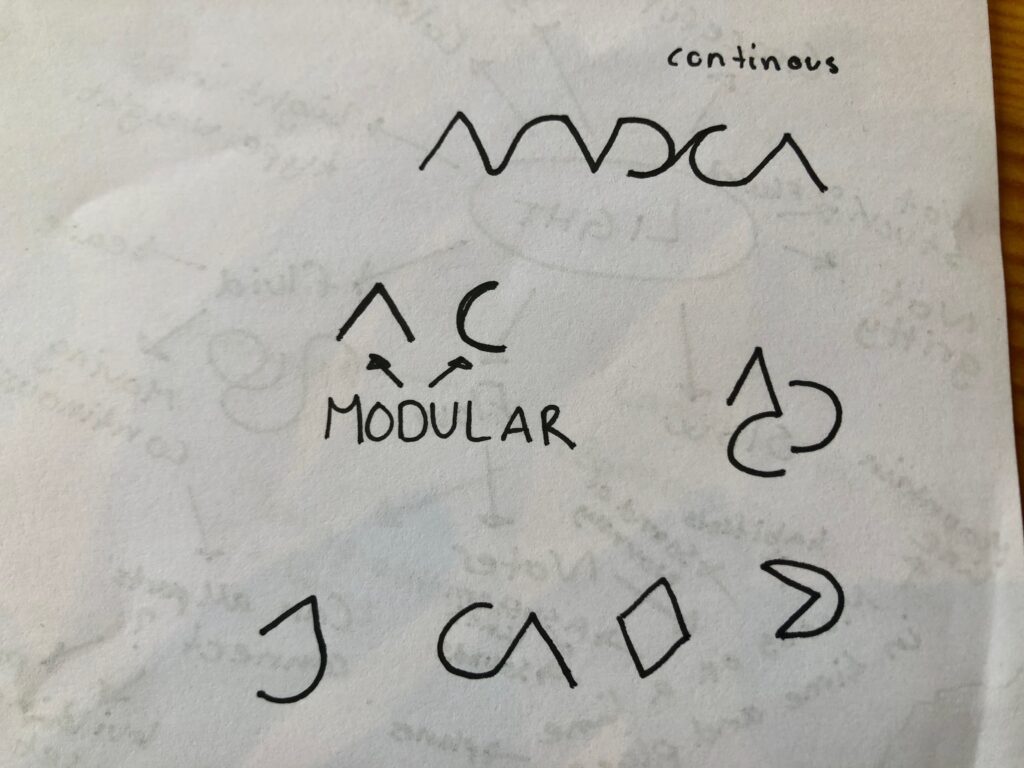
Modular
I briefly looked at using two shapes to construct signs. The pointy component was inspired by mountains and the round would act as a visual contrast.
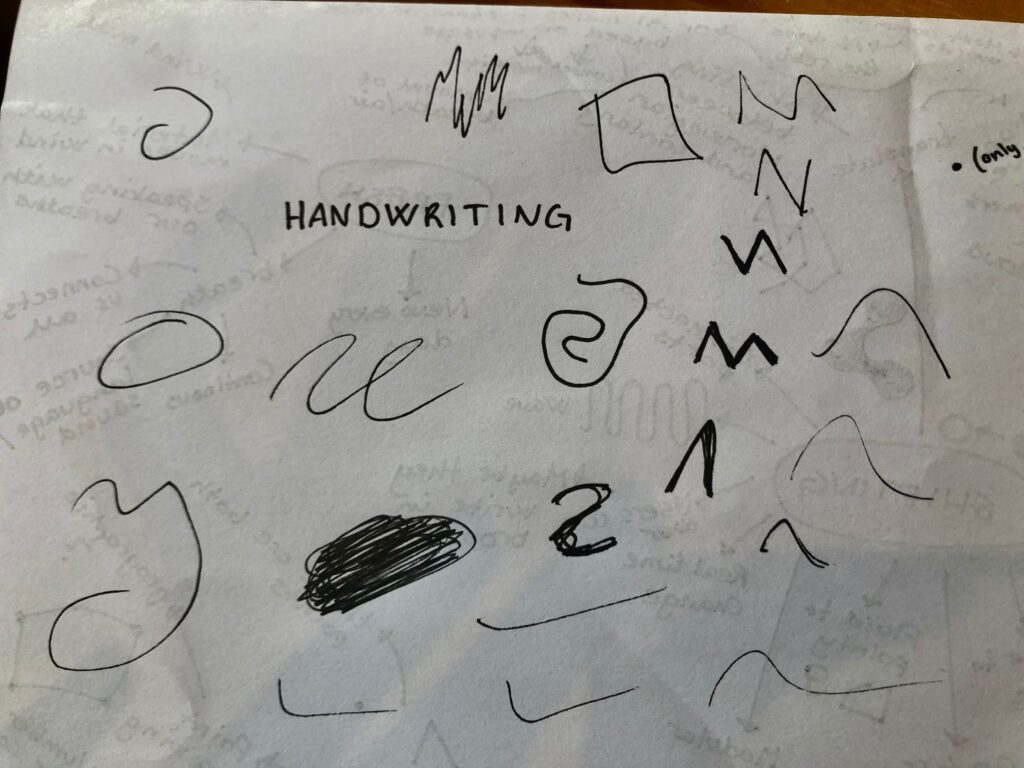
Handwriting
Rather than developing the construction of signs/letters myself, I could potentially gather handwritten symbols from workshop participants from a range of backgrounds. This more organic approach ties in well with the body aspect of one’s identity which becomes “larger” when having no national belonging.
Collecting drawings or shapes as responses to “how would you draw Norwegian?” could also be a good way of gathering insight from outsiders of the project.
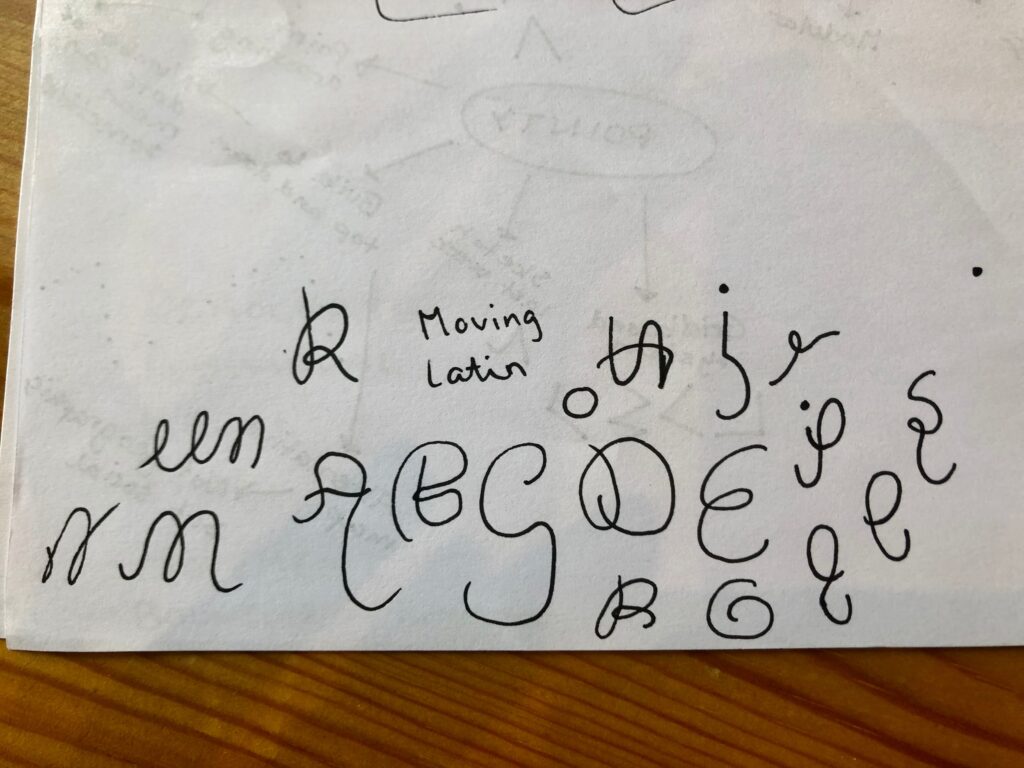
Latin letters with movement
As mentioned, I was interested in adding movement to the stiff Norwegian writing system. Perhaps one could work on globalising the Latin alphabet, rather than constructing a new one?
If so I think it would be interesting to make the letters almost illegible, to make viewers look beyond the words.
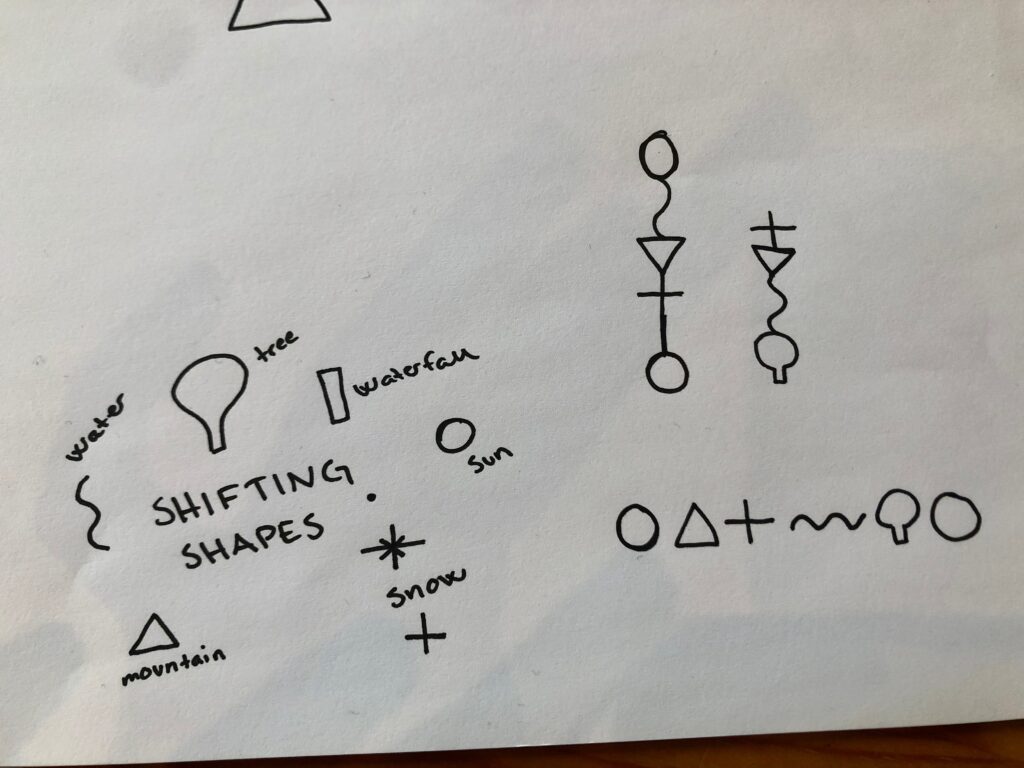
Nature signs
As mentioned above, I was interested in speaking about nature in my language, as a reference to de-nationalise the land. A simple way of doing this could be to signs for nature objects.
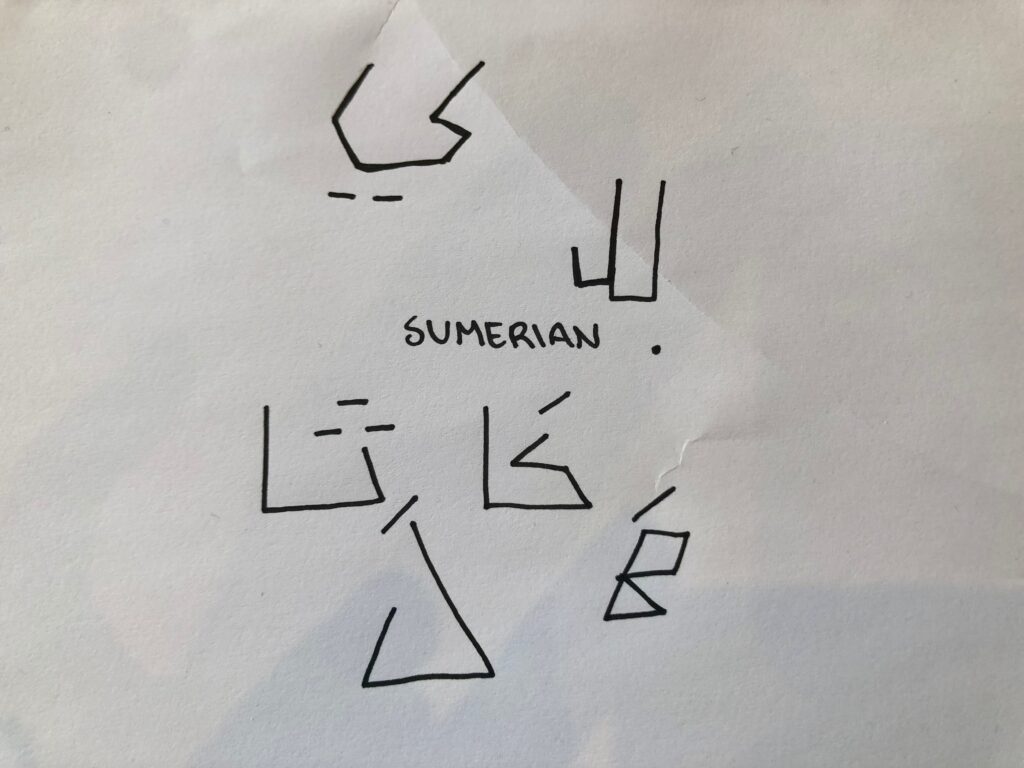
Sumerian-inspired conlang
During my ideation I looked up what the first written language was, which led me to briefly look at Sumerian. I think it could be interesting to go back to a language that speaks of humans before the languages of today, as a way of connecting us all as one. The stiff structure of how Sumerian is written also worked well with the descriptive word pointy, referring to Norway’s varying heights and mountains.
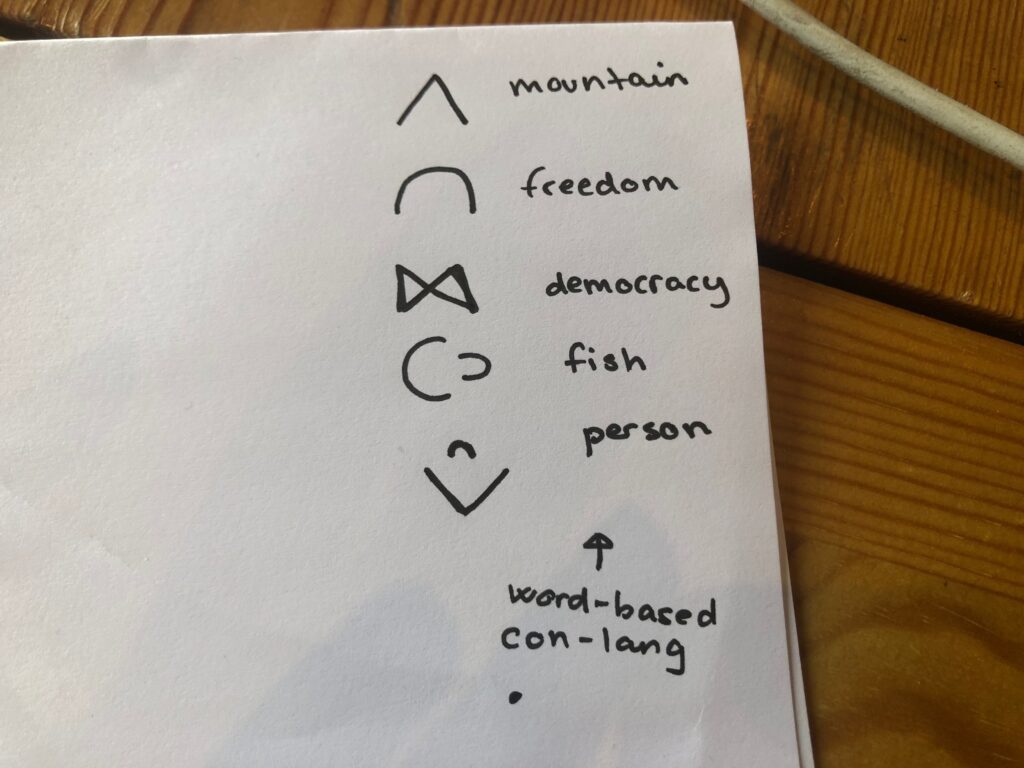
Sign-based
A more obvious approach to my project could simply be to develop illustrations/signs for common words, assuming an AI could be used to fill the rest of a dictionary.
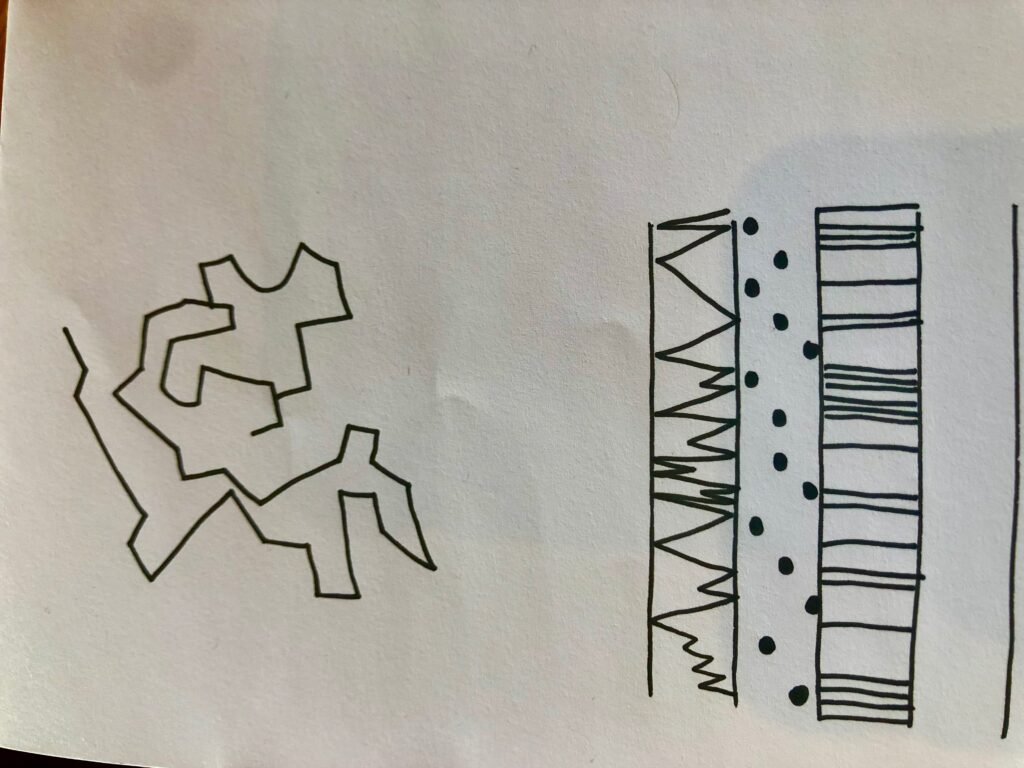
Continuous data lines
By reflecting on how light materials would move in harmonising flows, I was interested in looking into continuous lines. By developing a structure of some sort, I could begin to visualise different types of data. This could be as simple as amounts of planes in the sky at any certain point, or as advanced as building a machine that responds to people’s amounts of breadth when talking (leading to some kind of visualisation, turning verbal language into visuals).
Type experiments
In order to prepare for the industry panel review, I wanted to develop quick digitalisation of the ideas I found most relevant.
Sumerian-inspired conlang:
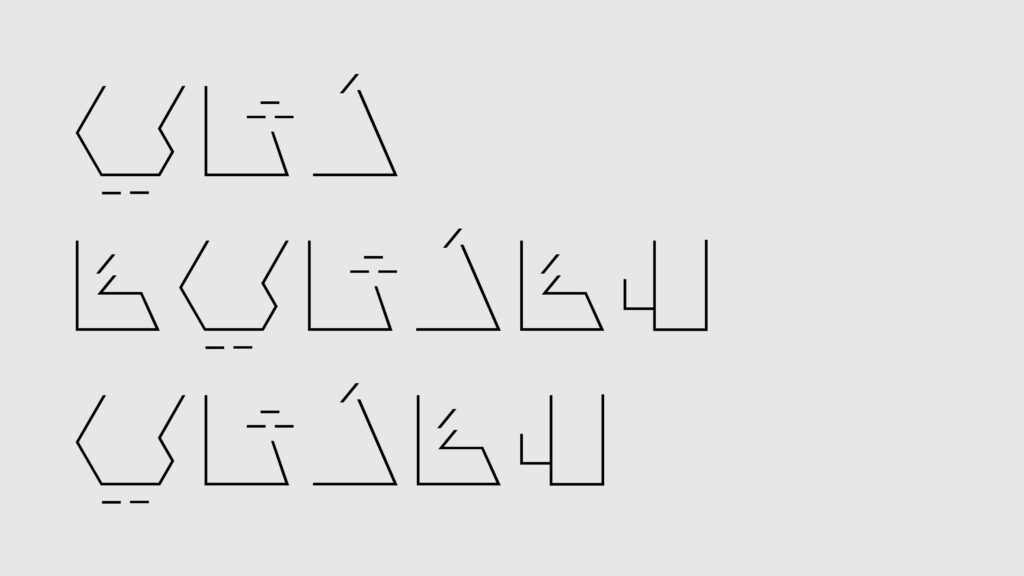
Swirly forms:
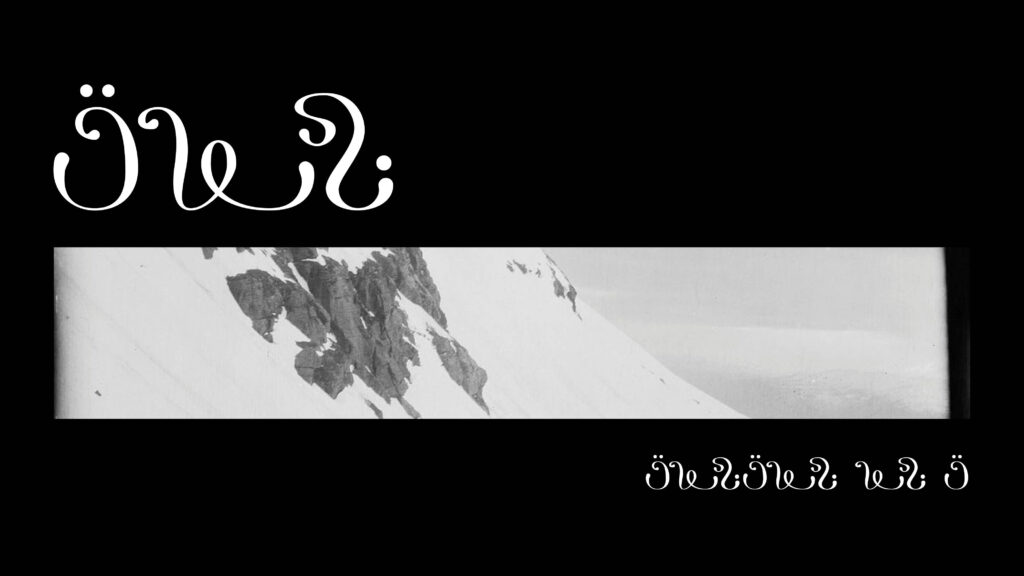
Nature signs:
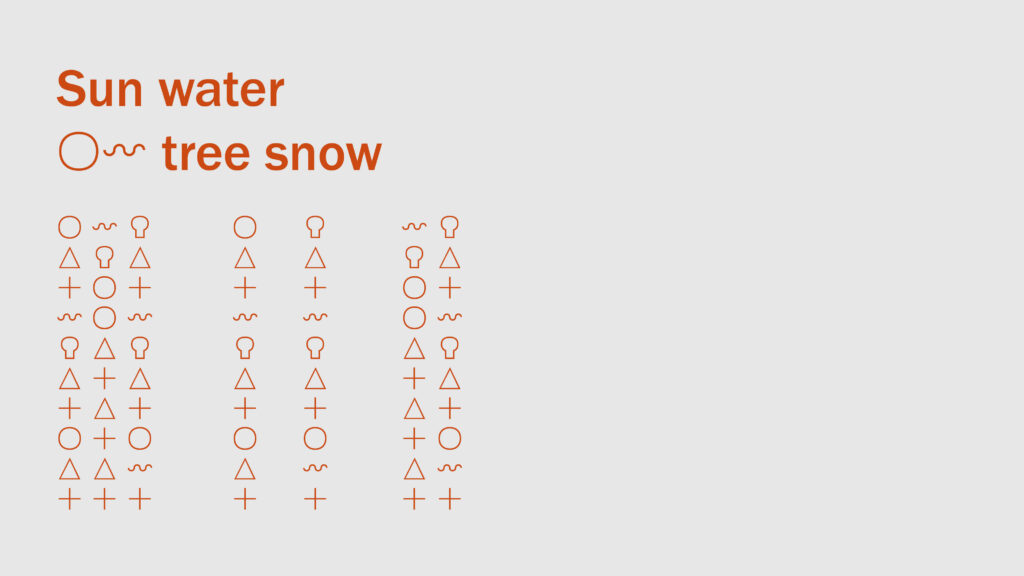
Handwriting:
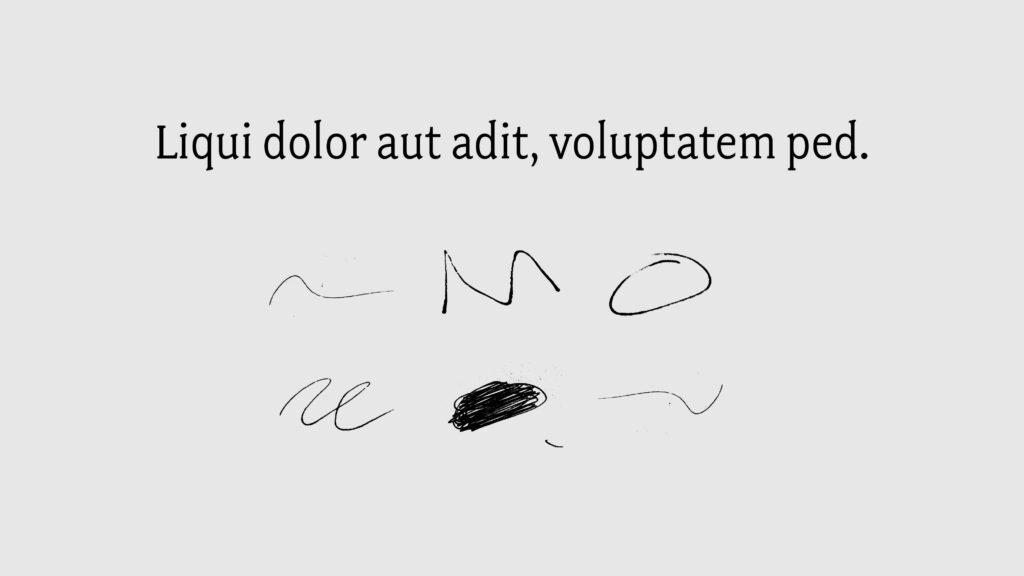
Weekly wrap up
It’s been good to finally make some progress for the making part of my project this week. Due to some illness I haven’t been able to put in as many hours as I would have liked, but I still think I’ve managed to develop something to gather feedback from.
Purely visually I’m quite drawn to the swirly form experiments, although they did make me question the foundation of my project. When developing a non-legible typeface, is there a chance that rather than including people, I am making viewers feel excluded due to not being able to understand it? If so I think there is a possibility of angling the project in this direction, as a way of making Norwegian policy makers see Norway from an immigrant’s perspective.
There is something interesting about this confusion and exclusion, but to understand this aspect further, I think it will be important to ask for feedback on what people feel when seeing the visuals. By testing a range of ideas on people in this way, I could perhaps begin to control what I’m communicating with a non-verbal language.
I’d also like to consider the possibility of including the Norwegian language in my project, for example by developing a translator tool or a variable typeface – shifting between verbal and visual communication.
LIST OF FIGURES:
Figure 1-5: Ingrid REIGSTAD. 2022. Week 7 moodboards. Private collection: Ingrid Reigstad.
Figure 6: Ingrid REIGSTAD. 2022. Sumerian conlang experiment. Private collection: Ingrid Reigstad.
Figure 7: Ingrid REIGSTAD. 2022. Swirly form experiment. Private collection: Ingrid Reigstad.
Figure 8: Ingrid REIGSTAD. 2022. Nature signs experiment. Private collection: Ingrid Reigstad.
Figure 9: Ingrid REIGSTAD. 2022. Handwriting expertment. Private collection: Ingrid Reigstad.
